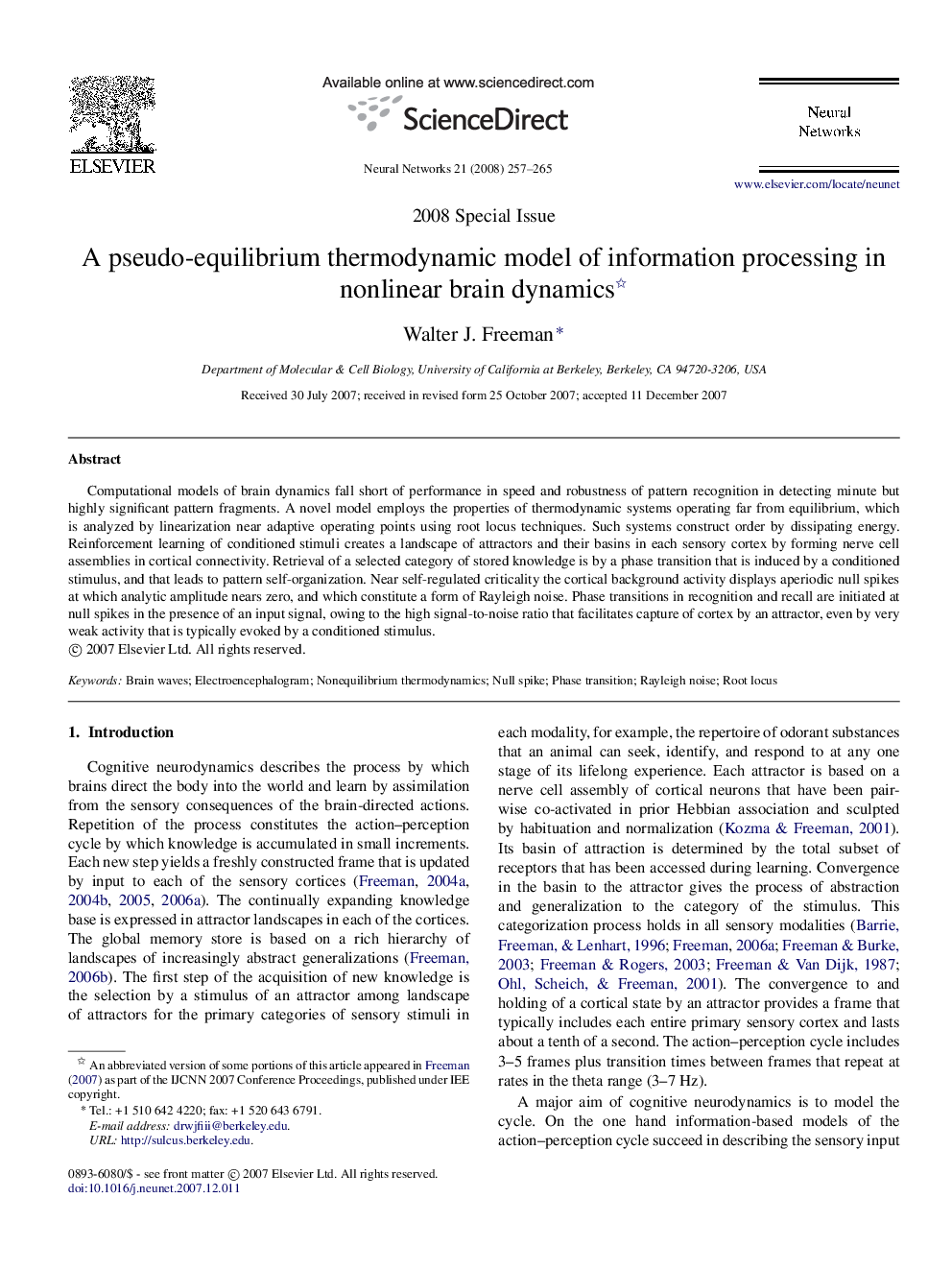| Article ID | Journal | Published Year | Pages | File Type |
|---|---|---|---|---|
| 404668 | Neural Networks | 2008 | 9 Pages |
Computational models of brain dynamics fall short of performance in speed and robustness of pattern recognition in detecting minute but highly significant pattern fragments. A novel model employs the properties of thermodynamic systems operating far from equilibrium, which is analyzed by linearization near adaptive operating points using root locus techniques. Such systems construct order by dissipating energy. Reinforcement learning of conditioned stimuli creates a landscape of attractors and their basins in each sensory cortex by forming nerve cell assemblies in cortical connectivity. Retrieval of a selected category of stored knowledge is by a phase transition that is induced by a conditioned stimulus, and that leads to pattern self-organization. Near self-regulated criticality the cortical background activity displays aperiodic null spikes at which analytic amplitude nears zero, and which constitute a form of Rayleigh noise. Phase transitions in recognition and recall are initiated at null spikes in the presence of an input signal, owing to the high signal-to-noise ratio that facilitates capture of cortex by an attractor, even by very weak activity that is typically evoked by a conditioned stimulus.
